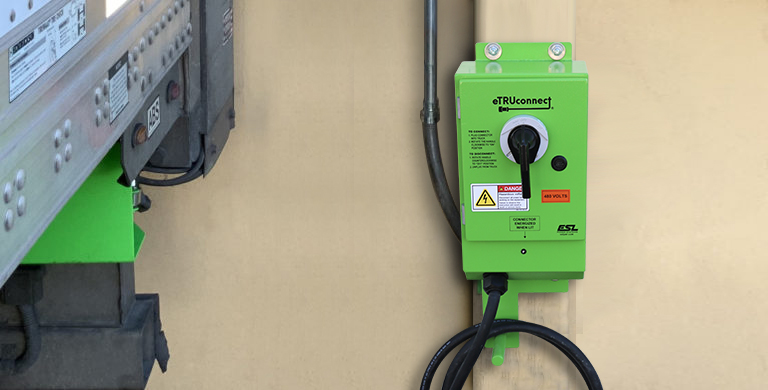
CORONA, California, July 2022 – ESL Power Systems, Inc. is pleased to announce an exclusive distribution agreement with PROCONECT, a French manufacturer specializing in industrial connectors. This partnership will allow ESL to utilize and distribute PROCONECT’s premier low and medium voltage push-pull receptacles and plugs; harnessing the expertise from both companies and providing advanced Shore Power Solutions for Cruise, Ferry, Ports and Container Terminals across all Americas.
Together, ESL and PROCONECT will offer safe, proven technology that is reliable, durable, and heavy duty for marine grade applications; in addition to offering compliance with local electrical regulations and codes.
This agreement grants ESL exclusive distribution in the Americas of PROCONECTs products for marine applications such as electrification of container handling equipment (ERTGs, RMGs, STS), and shore power for containers, ferries, cruise terminals and other types of vessels. ESL’s expertise and footprint in the market will offer PROCONECT customers local stock, support, and technical assistance.
PROCONECT CEO, Béatrice Barokhel states, “We are excited to be working with ESL and expanding PROCONECT’s reach for the port and maritime industry to the Americas. ESL’s custom solutions, excellence in customer service and dedication to innovation fall in line with PROCONECTS mission to serve our customers in a market that demands performance, timely delivery, and cost value.”
ESL President, Marcelo Gonzalez shares PROCONECT’s excitement. “We couldn’t be happier to work with a European company that supplies such a quality product to the port and shore power markets. We at ESL believe this partnership will provide our customers with the absolute best in quality connection for marine environments.”
For additional information or a project quote contact ESL’s Sales Team at: info@eslpwr.com
About ESL Power Systems, Inc.
A 100% employee-owned company located in Corona, CA, ESL Power Systems, Inc. is an innovative global leader in the design and manufacturing of cord-connected electrical equipment for industrial and commercial applications and is known as best-in-class builders of Ship-to-Shore Power Equipment. ESL works with customers globally to build custom engineered solutions for commercial and military applications such as: Cruise Lines, Ferry Terminals, Navy/NATO Ships & Bases, USCG Ships & Bases, and Container Ships & Ports Barges.
About PROCONECT
Created in 1981, PROCONECT is a French company located in Orvault, France that specializes in the conception of industrial connectors. Thanks to its high interest for Research and Innovation, PROCONECT is a very dynamic, creative and speed reactive company serving a market with high demand in performance, cost, and delivery time. ISO 9001 certified since 1998, PROCONECT is also registered as a NATO supplier.





